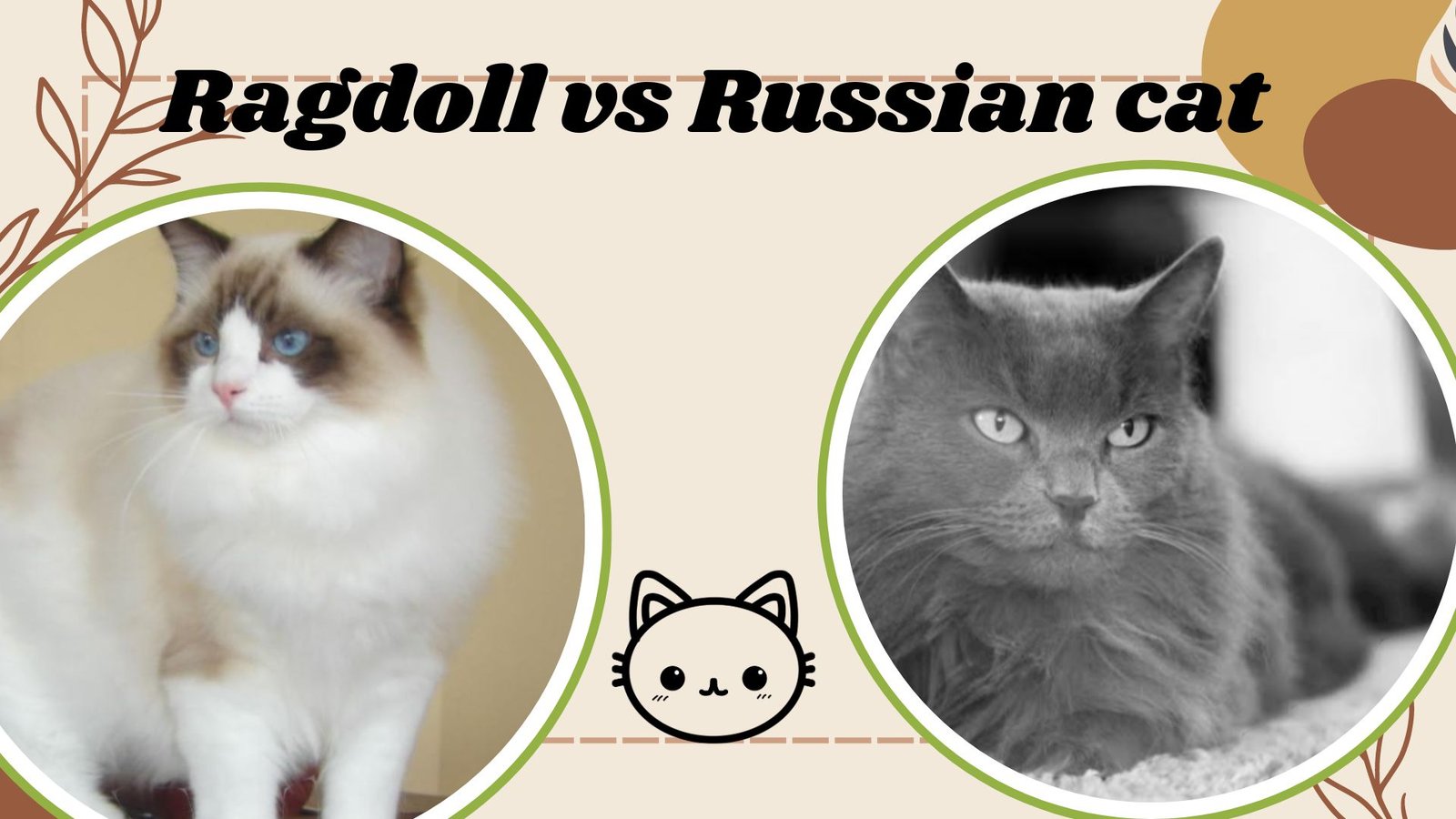Deciding on the right cat can be a fun but difficult decision. This is especially true for two beloved breeds: the Russian Blue and the Ragdoll. Both breeds have beautiful looks and fascinating personalities. But they differ in several ways. The Russian Blue has a short, shiny, silvery-blue coat, shining green eyes, and a more independent personality. The Ragdoll has a large, fluffy body and blue eyes. It is very sociable and easy-going.
If you want a peaceful, independent cat or a lovable, sociable one, knowing the differences and similarities between these two breeds can help. Let’s explore the Russian Blue vs Ragdoll.
Visual Differences
| Traits | Russian Blue | Ragdoll |
|---|---|---|
| Weight | 7-12 pounds | 15-20 pounds |
| Height | 9-10 inches | 9-11 inches |
| Personality | Reserved, Independent | Social, Affectionate |
| Lifespan | 15-20 years | 12-17 years |
| Exercise | Moderate | Low |
| Grooming Needs | Low | Moderate |
| Trainability | High, Intelligent | Moderate, Willing to Learn |
| Suitable For | Quiet Homes, Singles | Families, Multi-Pet Homes |
| Price | $500 – $1,200 | $800 – $2,000 |
Russian Blue Overview
The exact origins of the Russian Blue are not well documented, but it is believed to have originated in Russia. The breed is thought to have been present in the Russian port city of Arkhangelsk, where sailors brought these blue-furred cats aboard ships.
They gained recognition in the late 19th and early 20th centuries, and the first Russian Blues were imported to England and later to the United States.
Size & Appearance
The Russian Blue is a medium-sized cat, generally weighing between 7 to 12 pounds. Their legs are fine-boned but strong, and they have a slightly wedge-shaped head with large, pointed ears.
Russian Blues have a short, dense coat that feels plush and soft. The coat is blue-gray with a silver sheen. The short fur is easy to care for and does not shed more.
One of the most charming features of the Russian Blue is its brilliant green eyes. Russian Blue Kittens are born with yellow eyes. They turn green over time as the kittens mature.
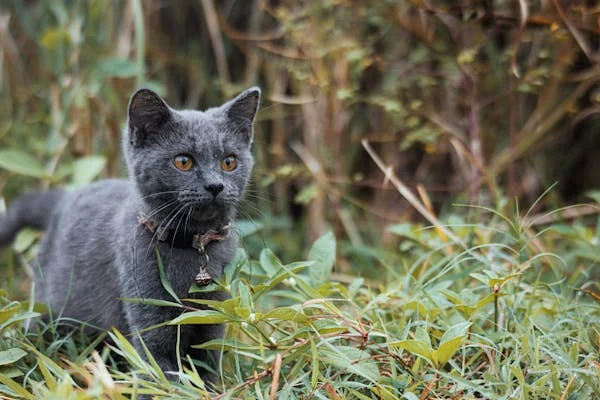
Temperament & Personality
Russian Blues are known for their quiet, reserved, and extremely loyal personalities. They form strong bonds with their owners and tend to be wary of strangers, often taking their time meeting new people.
Once they feel comfortable, they are affectionate and loving. They often follow their favorite humans around the house and curl up beside them. Russian Blues are intelligent and enjoy mental stimulation, such as puzzle toys and interactive games.
They are sensitive to their environment and prefer a stable, calm environment without sudden changes. Their independence allows them to be alone for longer periods than other breeds. However, they still enjoy the company of their owners.
Health And Care
Russian Blues are generally a healthy breed with a lifespan of 15 to 20 years. However, like all breeds, they can suffer from certain health issues. A common concern is obesity, which can lead to other health problems such as diabetes and joint problems. Another issue that can affect Russian Blues is urinary tract infections, especially if they are not drinking sufficient water.
This can lead to the formation of crystals or stones in the bladder, which can cause discomfort and possible blockages. Additionally, Russian Blues can get dental diseases such as gingivitis. Therefore, regular dental care and vet checkups are important for their health.
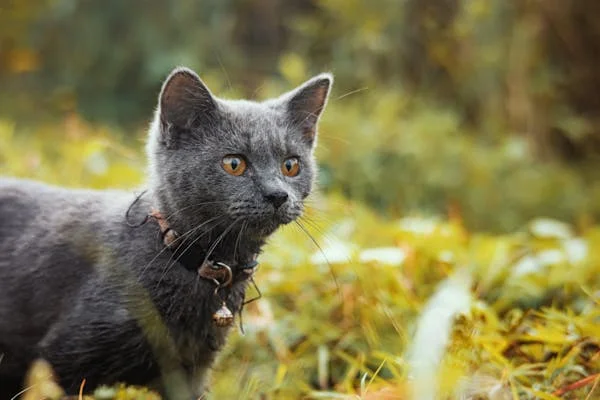
Grooming
The grooming needs of the Russian Blue are low due to its short, dense coat that does not tangle or mat easily. Double-layer fur is not only plush but also has a unique texture that sheds very little, even during seasonal changes.
Weekly brushing is usually required to remove loose hair and maintain the shiny appearance of their coat. Russian blues are also known for their meticulous self-cleaning habits, further reducing the need for regular grooming.
Additionally, their short fur means they are less likely to develop ingrown hairs.
Ragdoll Overview
The Ragdoll breed has a more recent and documented history. The Ragdoll breed was created in the 1960s by a woman named Ann Baker in Riverside, California, USA. The breed’s foundation cat, Josephine, was a semi-feral white longhaired cat with Siamese-like markings.
Baker developed the breed through selective breeding, focusing on creating cats with docile and gentle temperaments. The name “Ragdoll” was given to the breed because the cats tended to go limp and relaxed when picked up, resembling a child’s ragdoll.
Size and Appearance
Ragdolls are much larger than Russian Blues. Males weigh 15-20 pounds, and females weigh 10-15 pounds. They have a strong, solid build. Their semi-longhaired coat gives them a lavish, teddy bear-like look. They have broad chests and muscular legs. Their size and physicality make them one of the larger domestic cat breeds.
They have a semi-long coat that is silky and luxurious to the touch. Unlike many long-haired breeds, Ragdolls have a single-layer coat. This makes grooming easier and reduces matting. Their coat comes in various pointed patterns, including colorpoint, mitted, and bicolor. These patterns generally have darker colors on the ears, face, paws, and tail. The rest of the body is lighter. Common colors include blue, seal, chocolate, and lilac.
Ragdolls have deep blue eyes. In contrast, Russian Blues have green eyes
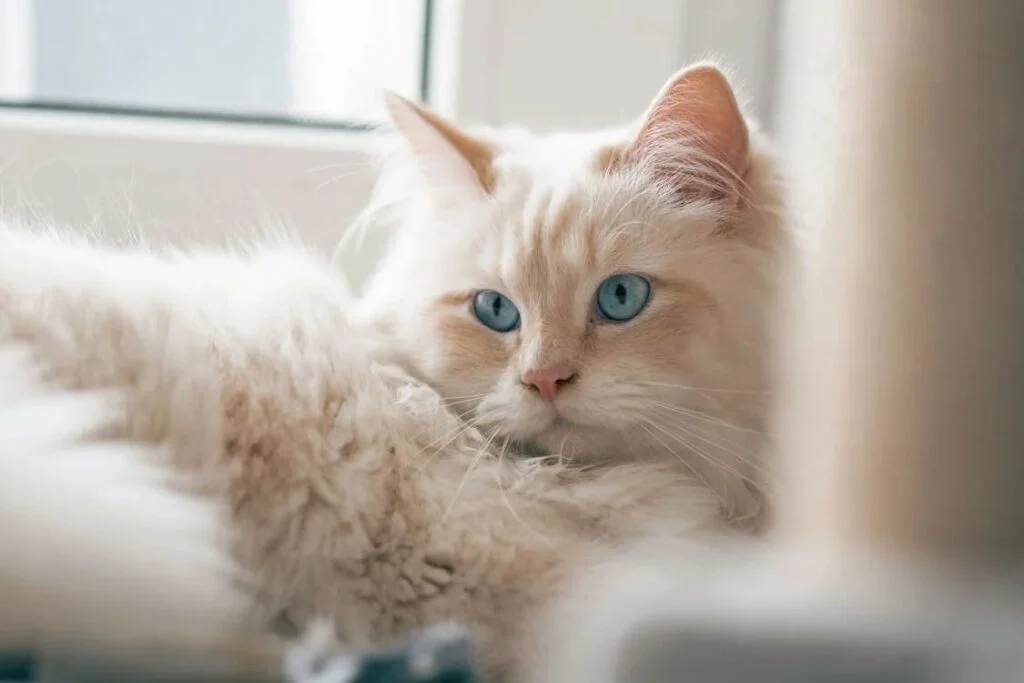
Temperament & Personality
Ragdoll cats are known for their social, friendly, and laid-back personalities. They are called “dog-like” for their love of following their owners, greeting them at the door, and joining in on family activities.
Unlike the more independent Russian Blue, Ragdolls actively look for attention and are happiest when they are close to their human companions. They tend to go limp when picked up, which makes them very easy to handle.
They are also very tolerant of children and other pets, even dogs. Their calm and docile nature means they are less likely to become nervous in a busy household, and they are generally very patient, even with small children.
Ragdolls have a lower activity level compared to Russian Blues.
Health and Care
Ragdolls are generally a healthy breed with a lifespan of 12 to 17 years. Still, like all breeds, they are prone to certain health issues. A major issue is hypertrophic cardiomyopathy (HCM), a heart disease that causes the heart muscle to thicken, potentially leading to heart failure if not handled properly.
Another problem is bladder stones, which can cause urinary obstruction and, if severe, require surgical intervention. Polycystic kidney disease (PKD) is another genetic condition that can affect Ragdolls. It causes cysts to form in the kidneys, which impairs their function over time.
A healthy diet, proper hydration, and regular vet visits can help control these risks and ensure your Ragdoll lives a healthy life.
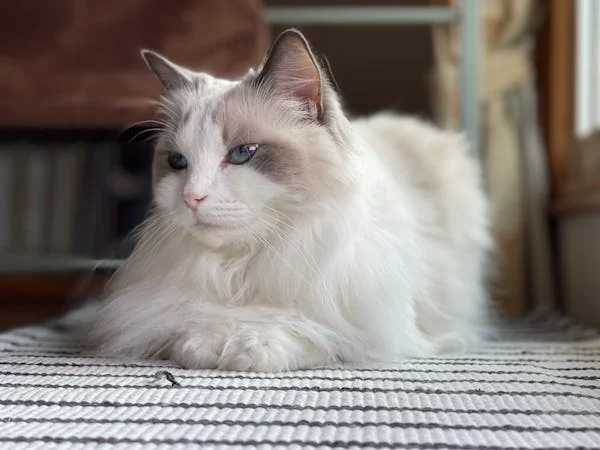
Grooming
Ragdolls have luxurious semi-long coats and require more grooming than Russian Blues. Their fur is less prone to matting than some long-haired breeds. However, they still need to be brushed at least 3 to 4 times a week to prevent tangles, especially around the neck, under the arms, and along the tail.
Regular brushing also helps reduce shedding and reduces the risk of ingrown hairs, which can be more common in Ragdolls due to their long fur. Their coat is less oily than some breeds. So, they do not need to be bathed frequently. However, occasional bathing can help keep their fur in top condition. Ragdolls do need a grooming routine.
It should include ear cleaning, as wax can build up in their ears. Maintain their nail length through frequent trimming to prevent excessive growth.
Which Breed is Right for You?
Both the Russian Blue and the Ragdoll are superb companions, but the best breed for you depends on your lifestyle and Choice.
If you want a low-maintenance, loyal companion that likes a peaceful environment, the Russian Blue may be the best choice. They are perfect for those who value a predictable routine and a quieter household. Russian Blues are independent, still affectionate, and do not require constant attention, making them best for individuals who may be away from home for work or other responsibilities.
If you crave a friendlier, more social, and affectionate pet, the Ragdoll is a better fit. It loves attention and gets along great with families and other pets, even dogs. Its calm, affectionate nature makes it an ideal choice for those looking for a loving, interactive pet. They thrive in busy, people-filled homes. They are happiest at the center of family life.

Hey guys, My name is Simon Smith. I’m from Canada and live near Victoria
I live with my sweet family and have 20+ Ragdolls of different types. I love them as my children. My profession is as a hotel manager.
I love to keep Ragdolls and grow their breeder case. I have 7 years of experience.
I’m an expert in cat care. So, I’m here to provide you with new information about my cats daily. This is my blog website, so I request that you kindly visit our site daily.
If you’re a Ragdolls lover and you have any questions or confusion about cats, text me on the Contact Us page or Gmail.
Thank u
